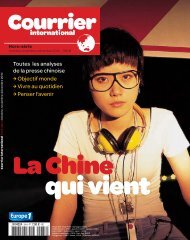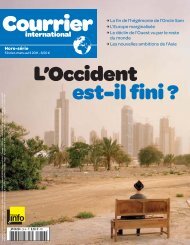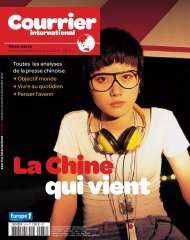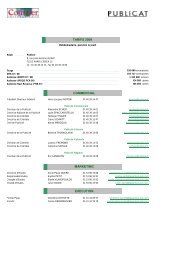2 ОРГАНИЗАЦИЯ И МЕТОДИКА РАБОТ - Courrier international
2 ОРГАНИЗАЦИЯ И МЕТОДИКА РАБОТ - Courrier international
2 ОРГАНИЗАЦИЯ И МЕТОДИКА РАБОТ - Courrier international
You also want an ePaper? Increase the reach of your titles
YUMPU automatically turns print PDFs into web optimized ePapers that Google loves.
is determined whether a waste is fuel and lubricant residual or PCB-containing wastes. Identified<br />
waste is formed in two flows at additional sites.<br />
Flow of dtums with fuel and lubricant residuals or empty drums (with frozen water).<br />
The disposal of drums consisting of two modules, a special press, Fakel-1M installation, 25-50<br />
m 3 containers.<br />
The disposal modules include:<br />
heat generator for thawing of drums, frozen fuel and lubricant remains or water;<br />
equipment for cleaning drums;<br />
equipment for opening drums.<br />
In order to ensure environmental cleanliness of the operations, the modules are equipped with<br />
trays to prevent the spill of fuel and lubricant residues and flushing water.<br />
equipment for opening drums opens the drum top bottom, after which it is sent either to Fakel-<br />
1M to remove its fuel and lubricant residuals, or to equipment for cleaning drums.<br />
Fakel-1M [67] burns up fuel and lubricant and water-oil emulsion residuals collected from the<br />
disposal facility. If it is not possible to burn up, liquid waste are moved to a 25-50 m 3 tank for<br />
temporary storage. Control of gas emissions and waste incineration is carried out continuously<br />
by using special equipment.<br />
After the heat treatment of or cleaning fuel and lubricant residuals, drum is sent to a special 25-t<br />
press for compaction. Briquettes are packed in metal foil and placed on pallets for subsequent<br />
transportation to the mainland<br />
Flow of dtums with with PCB-containing waste.<br />
PCB-filled waste drums are sent to the mobile extraction complex for washing and elimination.<br />
the mobile unit includes:<br />
draining and flushing unit;<br />
solvent recovery unit;<br />
high-thermal oxidation unit (rotating pipe furnace);<br />
nitrogen preparation amd gas drying unit;<br />
end gas cleaning;<br />
unit for receiving and packaging solid and liquid wastes.<br />
The draining process is carried out in a temperature controlled unit. Removing the liquid phase<br />
of PCB waste is carried out using peristaltic submersible pumps to ensure pumping of very<br />
viscous liquids.<br />
Extracted components are collected in an intermediate container in which an averaged sample is<br />
collected for qualitative and quantitative analysis.<br />
Emptied containers are dcontaminated by of methylene chloride vapors in accordance with the<br />
adopted technology. The process of decontamination is completed when the concentration of<br />
PCB in the condensate flowing from the tank is no more than 50 ppm. The condensate is sent to<br />
a solvent recovery unit.<br />
Decontaminated containers are sent to the flow of empty drums for thermal decontamination and<br />
subsequent compaction. Spent activated carbon from the suction traps and non-metal wastes are<br />
sent to the same flow,<br />
FINAL REPORT for Contract No. CS-NPA-Arctic-13/2009 of December 01, 2009 within the framework of pilot project Development<br />
of Technology of clean up of the area of Decommissioned Sites of The Russian Federation Ministry of Defense in the Arctic by the<br />
Example of Alexanra Island of Franz Josef Land Archipelago from Hazardous Waste<br />
153








